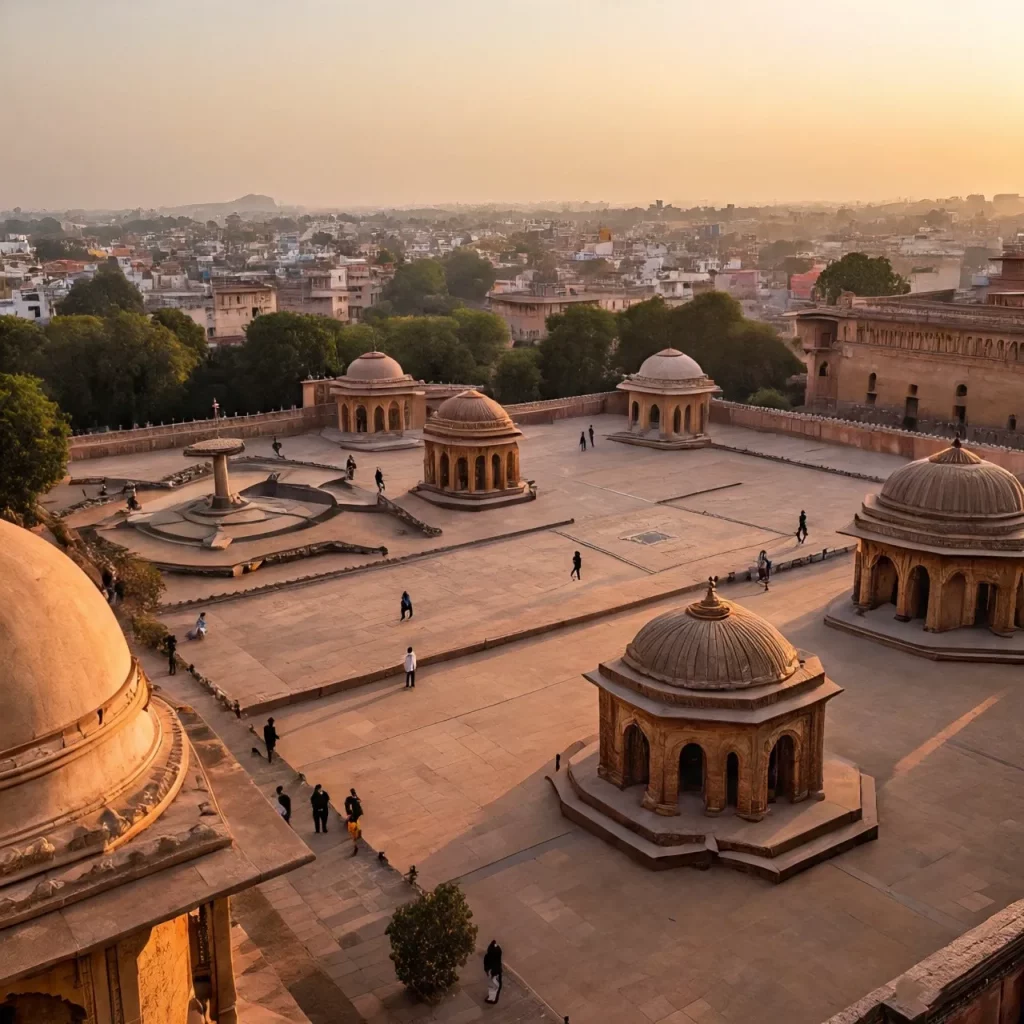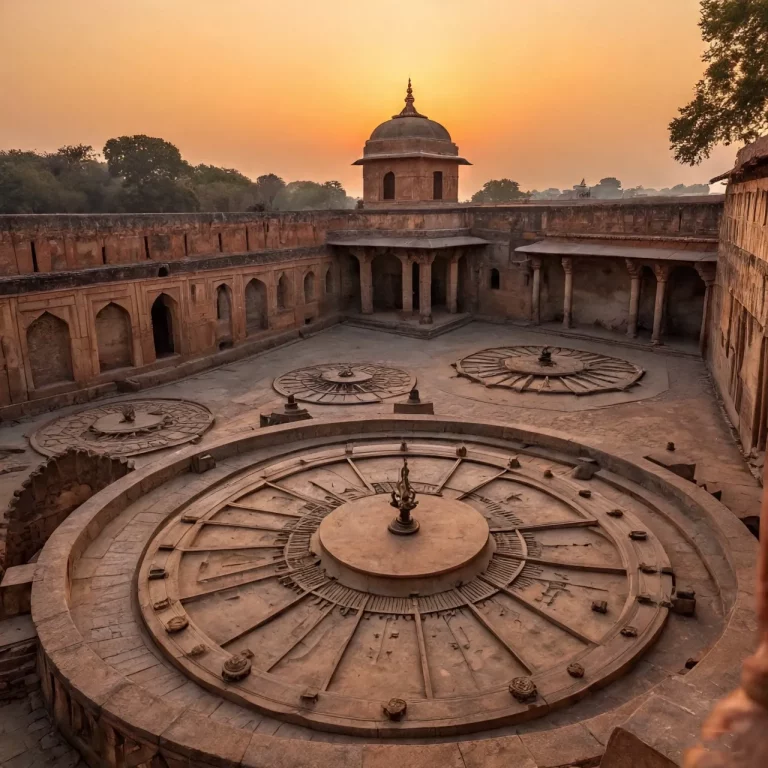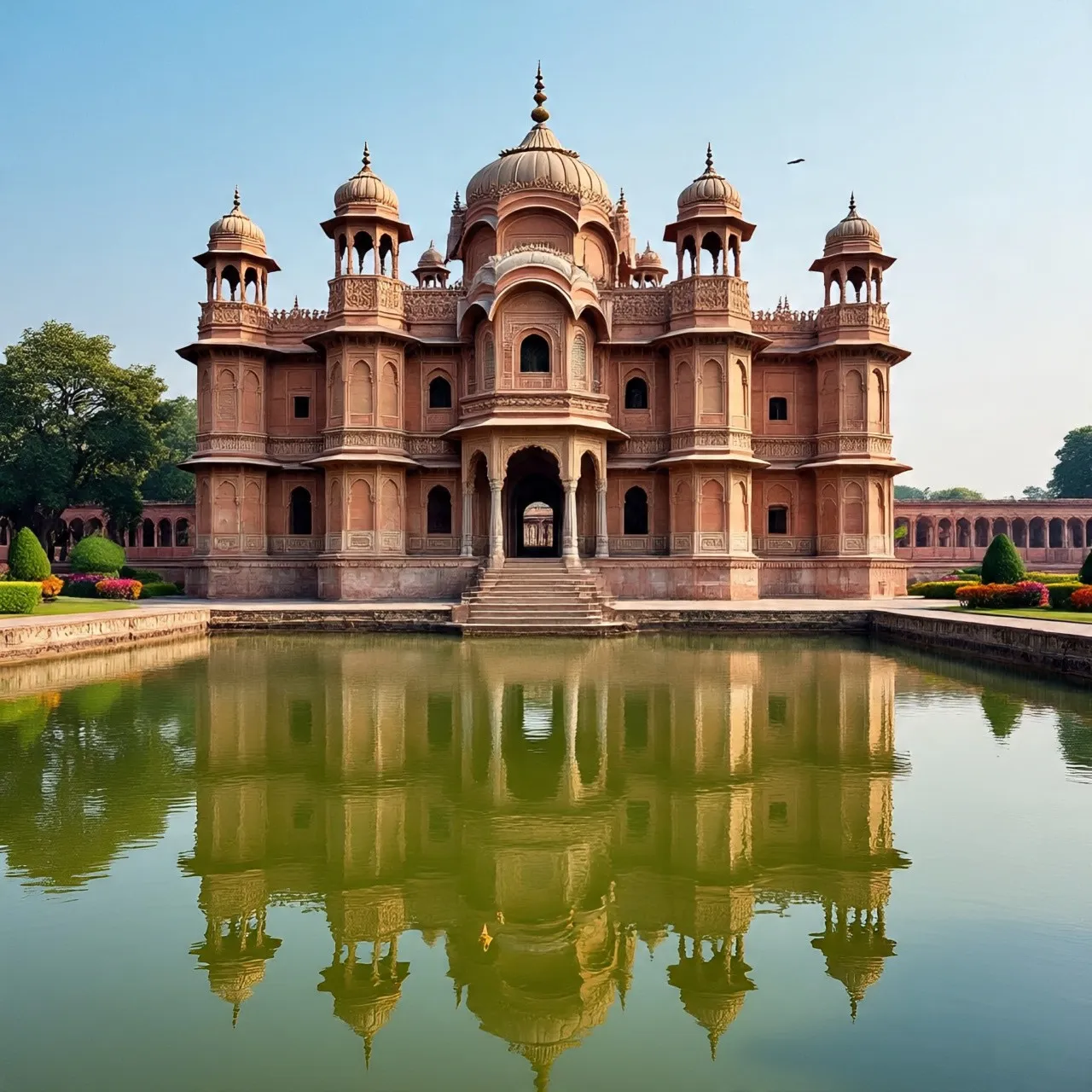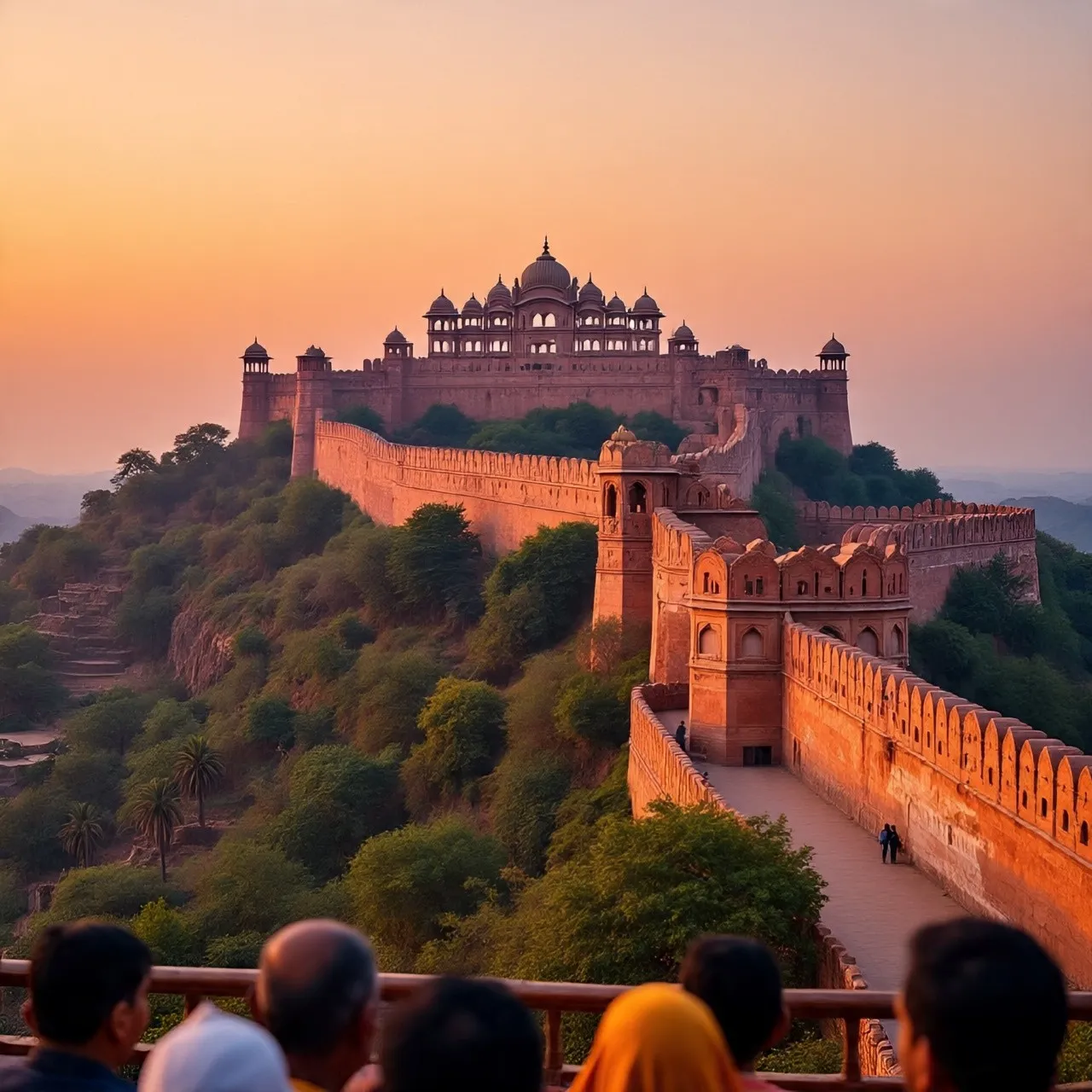📜 Historical Significance
Jantar Mantar was commissioned by Maharaja Sawai Jai Singh II, a visionary ruler and astronomer, who built five such observatories across India. The Jaipur site is the largest and best preserved. Completed in 1734, it reflects India’s rich scientific heritage and Jai Singh’s passion for astronomy and mathematics.
The instruments were designed using ancient Sanskrit texts and refined with Islamic and European astronomical knowledge. The observatory helped improve calendar accuracy and astrological predictions for royal and civic use.
🏛️ Architectural Highlights
- Total Instruments: 19
- Material: Stone and marble
- Key Structures:
- Samrat Yantra: World’s largest sundial (27 meters tall)
- Jai Prakash Yantra: Dual hemispherical bowl for celestial tracking
- Rama Yantra: Measures altitude and azimuth of celestial objects
- Chakra Yantra: Calculates solar positions
- Nadivalaya Yantra: Tracks time in both hemispheres
Each instrument is fixed and calibrated to Jaipur’s latitude, making it highly accurate even today.
Jantar Mantar Jaipur features 19 fixed astronomical instruments, each designed for precise celestial observations. These massive stone and marble structures measure time, track stars, predict eclipses, and calculate planetary positions—without telescopes.
Here’s a detailed breakdown of all 19 instruments:
🧭 1. Samrat Yantra (Supreme Instrument)
- Purpose: Measures time with incredible accuracy (up to 2 seconds)
- Design: A giant triangular sundial with a 27-meter-high gnomon and curved quadrant
- Function: Tracks solar movement and local time
🌐 2. Jai Prakash Yantra
- Purpose: Determines celestial coordinates and zodiac positions
- Design: Two hemispherical bowls with crosswires and a central disc
- Function: Observer stands inside to read star positions
📐 3. Ram Yantra
- Purpose: Measures altitude and azimuth of celestial bodies
- Design: Two open cylindrical structures with central pillars
- Function: Used for angular measurements of stars and planets
🕰️ 4. Nadivalaya Yantra
- Purpose: Measures time in both hemispheres
- Design: Two circular faces—north and south—mounted vertically
- Function: Tracks solar time throughout the day
🌞 5. Chakra Yantra
- Purpose: Calculates solar positions and declination
- Design: Circular plate with markings and a gnomon
- Function: Used for solar astronomy
🧭 6. Digamsa Yantra
- Purpose: Measures azimuth (horizontal angle) of celestial objects
- Design: Two pillars with a rotating arm
- Function: Used for sunrise/sunset and directional readings
🧭 7. Daksinottara Bhitti Yantra
- Purpose: Measures meridian altitude of celestial bodies
- Design: A vertical wall aligned north-south with a graduated arc
- Function: Tracks celestial transit across the meridian
🧭 8–17. Rasivalaya Yantras (12 Zodiac Instruments)
- Purpose: Measure celestial coordinates for each zodiac sign
- Design: 12 separate instruments, each aligned with a zodiac constellation
- Function: Used for astrological calculations and star tracking
🌙 18. Kapala Yantra
- Purpose: Determines coordinates of celestial bodies
- Design: Bowl-shaped structure with markings
- Function: Similar to Jai Prakash but smaller and more focused
🪐 19. Vrihat Samrat Yantra
- Purpose: A larger version of Samrat Yantra for more precise timekeeping
- Design: Monumental sundial with extended quadrant
- Function: Measures time and solar declination

🏛️ Architectural Notes
- All instruments are fixed and calibrated to Jaipur’s latitude (26.92°N)
- Built from stone, marble, and brass, ensuring long-term stability
- Designed for naked-eye observation, no telescopes required
🧠 Scientific & Cultural Fusion
- Design Philosophy: Combines Hindu cosmology with Islamic astronomy and European scientific methods.
- Symbolism: Instruments are not just functional—they reflect the Maharaja’s belief in cosmic harmony and royal duty.
- UNESCO Recognition: Jantar Mantar was designated a World Heritage Site in 2010 for its cultural and scientific significance.
🧳 Visitor Experience
- Interactive Demonstrations: Guides explain how each instrument works using sunlight and shadows.
- Educational Value: Ideal for students, astronomers, and architecture enthusiasts.
- Visual Impact: The massive geometric shapes create dramatic shadows and angles, making it a photographer’s delight.



